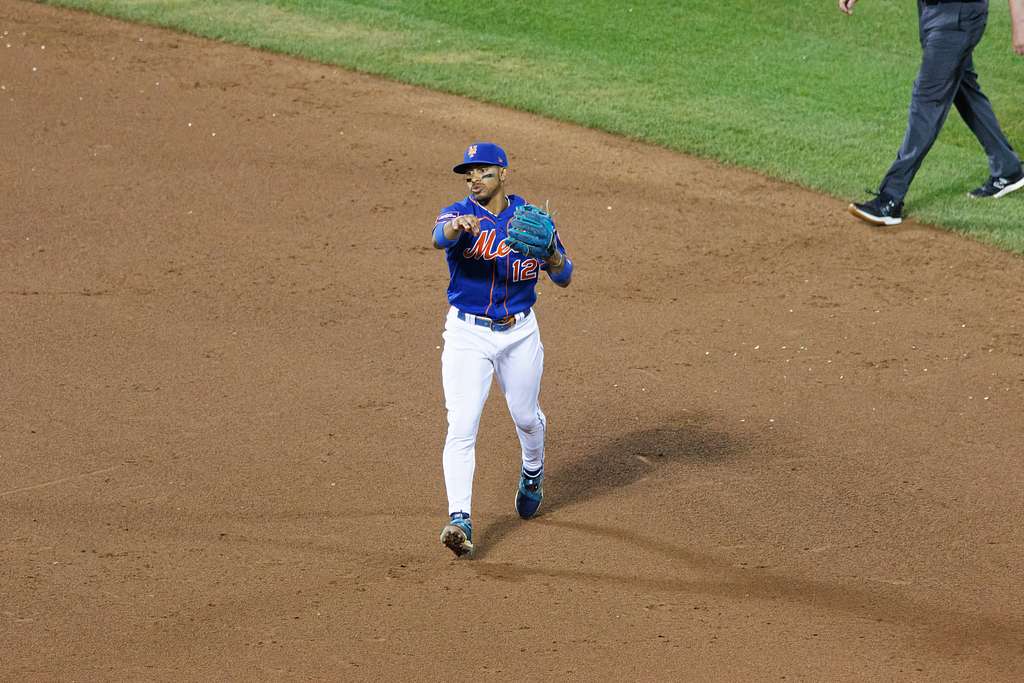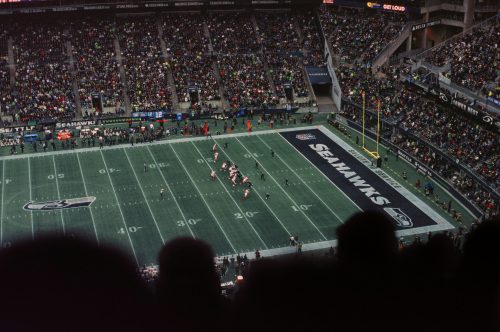On March 29, Michael Kay and the Yankees TV broadcast booth mentioned that some Yankee players were using new bats, which they described as torpedo-like. This was mentioned in passing, but the phenomenon of the torpedo bats has caused a lot of discussion in the early parts of the MLB season.
There’s a lot of information on the torpedo bats coming out, and it can be hard to keep track of it all. It’s important to fully understand what these bats are so you can fully enjoy the new MLB season.
What Are Torpedo Bats?
Torpedo bats are a new style of bat. These bats make the “barrel” of the bat to the middle of the bat, where hitters generally make the best contact. The middle of the bat is heavier, while the end of the bat, where the barrel normally is, is lighter. This allows for contact in the “sweet spot” in the middle to be hit stronger.
Are Torpedo Bats Legal?
MLB rules on bats are pretty simple. The rulebook says, “The bat shall be a smooth, round stick not more than 2.61 inches in diameter at the thickest part and not more than 42 inches in length. The bat shall be one piece of solid wood.” The torpedo bats fall within these regulations. The bats are still smooth, round, and one piece of solid wood. Umpires inspect bats before games. They have determined that even with a thicker barrel, they still fall within diameter regulations.
How Long Have Torpedo Bats Been Used?
The first known use of the torpedo bats was in the 2024 playoffs. Giancarlo Stanton used the experimental bat. It wasn’t reported at the time, and his black bat made it difficult to see specific dimensions. Stanton hit seven home runs in 14 games in the playoffs. Stanton just shut down rumors that the torpedo bats contributed to his injury problems in spring training. He intends to use a torpedo bat when he returns from injury.
Who Uses Torpedo Bats?
Currently, 16 players are using torpedo bats in MLB. The Yankees have five hitters using them. Former Yankee Jose Trevino uses it as well. The most notable user is 2024 NL MVP finalist Francisco Lindor.
Are There Downsides to Torpedo Bats?
The simple answer is yes. The torpedo bats are designed to maximize contact in the sweet spot. However, to stay within weight regulations, there is weight taken away from the end of the bat. This means if you make contact at the end of the bat, it’s less likely to go far. The end of the bat isn’t an ideal spot to hit, but sometimes a batter needs to. Pitchers could pitch away from batters with torpedo bats and force them to make contact on their thin spot at the end of the bat.
Do Torpedo Bats Truly Give An Advantage?
In theory, absolutely. Making harder contact in the sweet spot of the bat will lead to harder hit baseballs, which generally go further. So far, in practice, there have been mixed results. As of April 12, Jose Trevino is hitting .280 with a .440 slugging percentage and Paul Goldschmidt is having a revival year with a .360 batting average with the torpedo bats. However, three torpedo bat users, Cody Bellinger, Alec Bohm, and Jazz Chisholm, have struggled to start the new season.
Are Torpedo Bats The Future?
Well, beyond the fact that these bats are experimental and have mixed results so far, it doesn’t work like that. You can’t walk into Dicks sporting goods and ask for torpedo bats. You can’t even go to a Louisville Slugger plant and ask for them. These bats are specially made for each player. The analytics teams of their teams spent all off-season examining all of their at-bats in 2024 to determine how their bats should be built.
Also, as I stated earlier, torpedo bats give you a disadvantage if you are trying to make contact off the end of the bat. There are players like Ichiro Suzuki who made a Hall of Fame career off contact off the end of the bat. These types of bats would’ve put him at a disadvantage. These bats aren’t for every hitter.

Respect My Region (RMR) is a leading lifestyle platform dedicated to bridging the gap between cannabis, music, and culture. Through innovative events, authentic content, and a commitment to advocacy, RMR continues to set the standard for modern cannabis storytelling
Feature image via D. Benjamin Miller – Get Archive







